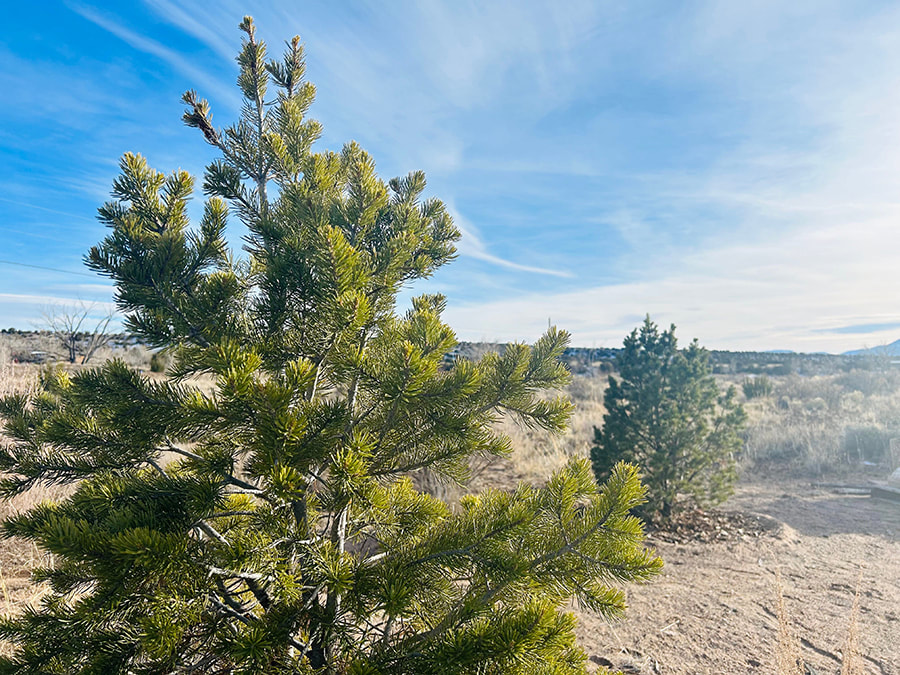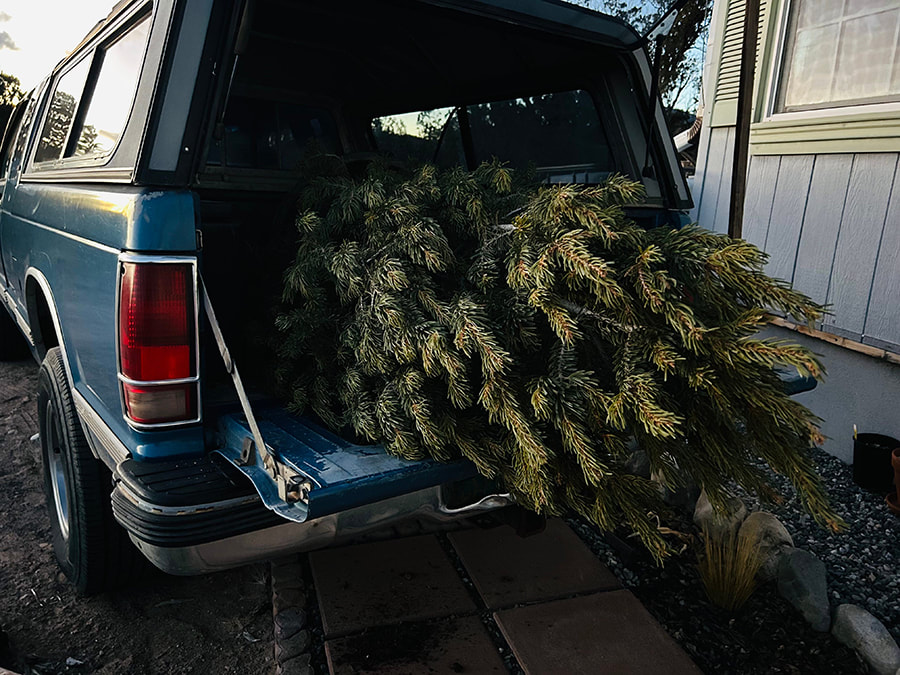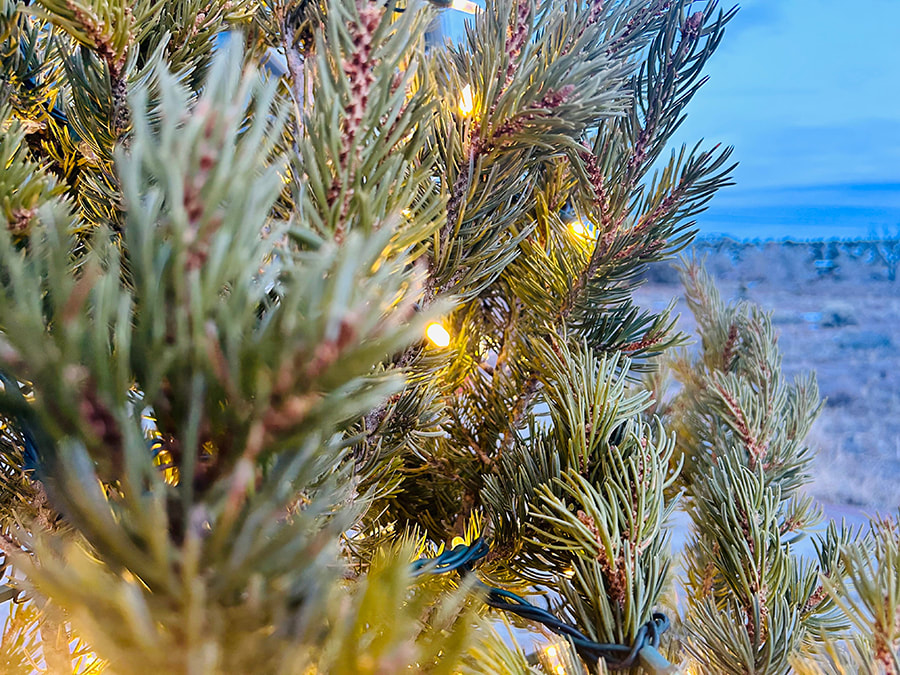|
This is ludicrous. I know it. The tree knows it. The woodland creatures know it. By Zach Hively When I was a younger man, I had a grand vision for my future: I would buy (or otherwise acquire) some land, and with this land I would grow a Christmas forest, planting a pine tree each year to create homes for woodland creatures until enough of them became my friends that I could dispense with human interaction altogether. I have grown and matured, though, and so has the vision. Namely, I am less certain that the forest is a Christmas one. I might more honestly call it a solstice forest. Or a Thanksgiving forest, since that is closer to when I buy the trees. Or a January forest, because that is when I plant them. Or, perhaps most accurately, I could call it a money pit. Regardless of cost, this is one dream coming true. I may not be a world-famous paleontologist ballplayer with a commercial pilot’s license (yet), but by Jiminy Christmas I have a forest. It is five feet tall, four trees large, and counting. Mostly it seems to be counting up. It almost counted down last year, when one of the trees developed an infestation of some kind--not the type of woodland creature I hoped to befriend—that made me abandon, with prejudice, my no-chemical kumbaya approach to winter forest management. This tree also had a comorbidity, a second infestation, that I could not identify despite my four years’ experience in forest stewardship. I showed a picture to a man at the nursery. “Looks like bird vomit,” he said. In hindsight, I question if he actually worked there. These are the difficulties that confound my annual tradition. You see, growing a magical EOY forest is less simple than picking up a tree from a lot and strapping it to the roof of any ol’ car. It is predicated on several factors, chief among them that picking up living trees is really, really hard. Living trees require dirt. Dirt is heavy. It is also notoriously difficult to strap to the roof. If we are perfectly frank—and why shouldn’t we be—half the reason I keep the registration current on my thirtysomething pickup is so that, once a year, I can drive it to my tree dealer, and he can direct two much younger men to hoist the tree into the bed, and I can drive it home where I unload it by my much older self. This is relatively easy to do; I have the advantage of gravity. The real trick is sliding this half-ton or so of wood and soil from three feet high to ground level without seriously injuring the tree, or myself, or my pride. If we are still perfectly frank—why stop now—this moment, usually taking place in dwindling daylight and encroaching cold, when I must navigate this living being and its dirt to the earth without the aid of an advanced pulley system, this is the moment I use to assess the state of my physical health. In short, it is my annual exam. When getting the piñon to the ground goes well, I am also doing well. When it is a struggle, or I throw out my back, or I wonder legitimately at any point if I will be spending the night pinned under a root ball, this motivates my exercise regimen for the next twelve months. I say this in earnest: other people train for beach bods or lower cholesterol. I look at a pull-up bar in May and think, “Better try to jump and touch that—I got a tree to unload this winter.” This is ludicrous. I know it. The tree knows it. The woodland creatures know it. But I can make myself think that I can indeed transform my body and my physical capabilities from one winter to the next. It sure seems much more plausible than transforming my body in a month, which is about how long I have to enjoy the tree, festooned with white twinkle lights outside my living room window, before I need to put it in the ground. This requires an even greater feat of strength than dragging the tree out of my pickup truck. Because I cannot get the tree back into the pickup truck, I have nothing but my wits and my muscles—mostly my wits—to walk the tree, all while battling friction and pine needles to my face, from my living room window to the Yuletide forest and the too-shallow hole I tried to dig after the ground had frozen.
Still, somehow, I have survived this odyssey every year, and so have the trees. We will more likely than not survive it this year, too. The forest will not be any taller, but it will be one tree bigger, and I will swell with pride every time I gaze upon it instead of doing a workout. In the spirit of frankness—in for a penny, in for a pound—I sure hope the birds don’t hurl on it. Zach’s Substack is free. The free stuff today will remain free tomorrow. Someday, he might offer additional stuff. Zach+, as it were. You can tell Zach that you value his work by pledging a future paid subscription to additional stuff. You won't be charged unless he enables payments, and he’ll give a heads-up beforehand. You can subscribe for free to Zach's Substack to receive weekly short writings -- classic Fool's Gold columns, new poems, and random musings.
5 Comments
Sara Wright
12/29/2023 06:57:13 am
I am delighted to read this story... there is something about keeping a living forest that warms my heart... the trees, of course, thank you and so do the animals...as for pests, well it's nature's way and you will lose some but the spirit of the trees will be with you!
Reply
Gail Rein
12/29/2023 08:02:34 am
Thank you Zach for your humor and your heart. We all need more of each.
Reply
Barbara Campbell
12/30/2023 09:07:43 am
I bought an $80 live Black pine about 15 years ago for a christmas tree. I had a hole dug earlier in the year and I planted it in January. It didn't weigh more than about fifty or sixty pounds so I was able to get it in the house for Christmas and out and into the hole. It is now about three stories tall. I love it. I bought one the next year and did the same thing, but it didn't survive. I am very happy with my very tall pine. I get to see it out my kitchen window every time I look up and I am truly amazed. I have lots of pinecones for starting fires too.
Reply
1/6/2024 04:45:14 am
Your delightful essay makes me think that I too might plant a tree on the high mesa where I have recently transplanted myself, and that I might see it thrive and grow as I hope to do!
Reply
Rodney Smith
1/8/2024 08:13:14 pm
The New Mexico Forestry Service has a seedling sales program providing various species. The variety spans different placements and practical uses. Windbreaks, fire restoration, reforestation management and glorious visual benefits!
Reply
Your comment will be posted after it is approved.
Leave a Reply. |
Submit your ideas for local feature articles
Profiles Gardening Recipes Observations Birding Essays Hiking AuthorsYou! Archives
October 2025
Categories
All
|



 RSS Feed
RSS Feed